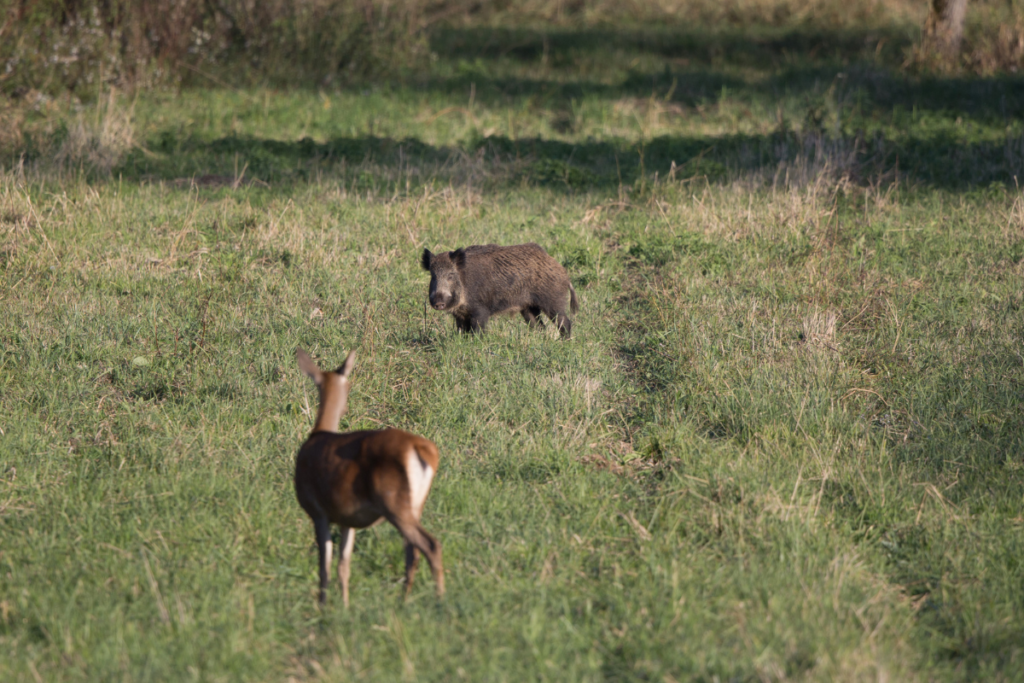Sundarbans National Park: The Wild Heart of India’s Mangrove Forests

Sundarbans, a mysterious land of dense mangrove forests, amazing rivers and the elusive natural world, is one of the most breathtaking natural miracles of India. This UNESCO World Heritage website, which extends throughout the Japanese, is part of the largest halophytic mangrove forest UNESCO. Sundarbans, which is often referred to as “Amazon of the East”, is an ecological miracle in which soil and water combine, creating global equally captivating because it is far mysterious.
In addition to its environmental importance, the Sundarbans are, furthermore, immersed in myths and folklore. From the mythical memories of Bonbibi, the protector of the forests, to the mysterious observation of the elusive royal Bengal tiger, every corner of this area, indeed, whispers stories about survival, resistance, and the irritating spirit of wilderness. Moreover, it is a place where nature, undeniably, rules excellently, and people have, consequently, found a way to coexist with their unpredictable forces.
Table of Contents
- 1 A Natural Wonder Like No Other
- 2 The Royal Bengal Tiger: The King of Sundarbans
- 3 Biodiversity That Stuns the World
- 4 The Life of the Locals: Survival in the Wild
- 5 Threats to the Sundarbans: A Fragile Paradise
- 6 Exploring the Sundarbans: A Journey into the Wild
- 7 A Final Thought: Preserving the Wild Heart of India
A Natural Wonder Like No Other
Sundarbans covers approximately 10,000 rectangular kilometers, with forty% of falsehood in India and the last 60% in Bangladesh. The place is known as after the Sundari tree, the kind of mangrove, which prosper in the brackish waters of the delta.
Geography and Ecosystem
- Sundarbans is part of the gangy-brahmaputra delta, one of the maximum fertile and dynamic rivers on the ground.
- It will accommodate a tidal waterway community, mud and small islands, which makes navigation a task for tourists.
- The specific mixture of fresh water and seawater gives rise to ascending and durable ecosystem that helps a relatively number of plants and fauna.
The Royal Bengal Tiger: The King of Sundarbans
One of the biggest interesting points of Sundarbans is his population of the royal Bengal tigers. Unlike their counterparts in other parts of India, the Sundarbans tigers adapted to swimming inside the delta salt waters. They developed strong limbs and web paws and let them pass through water. Due to the dense mangroves of the location, these tigers rely more on secrecy and hunting, unlike lengthy chases.
Interesting Facts About Sundarbans Tigers
- Sundarbans is home to ninety -six tigers, making it one of the last fortresses of this majestic predator.
- These tigers have evolved to become semi -public, often swim long distances between islands looking for food.
- Unlike other tigers, they can be recognized as their competitive nature and low disposition demanding to humans, including their fearsome recognition.
- Scientists have said that these tigers are usually night and prefer searching throughout the silence, regularly using strong flora as a cover.
- The prey base in Sundarbans consists of spotted deer, wild buildings and even fish and shows the adaptability of these massive cats.
- The thick mangroves make tiger observations unusual, providing their mysterious air secrets, making them one of the most elusive predators in the world.
Also Read: Kanha National Park: A Wildlife Adventure of Ultimate Madhya Pradesh
Biodiversity That Stuns the World
Apart from tigers, the Sundarbans is domestic to a rich style of natural world that makes it a paradise for nature lovers.
The thriving flowers and fauna make a contribution to the area’s ecological stability and make it a hotspot for wildlife enthusiasts, conservationists, and researchers.
Fauna of the Sundarbans

- Crocodiles Sailing Water – Some of the most important reptiles inside the global, these Crocs may develop up to twenty ft during the period and are top waterway predators of the area. They lurk inside the brackish waters and often see heated in the solar shores along the banks of the river.

- Gangetic dolphins – rare and endangered, those freshwater dolphins are a treatment to identify. They use echolocation to navigate in muddy waters and are taken into account the indicator of the species for the health of the water ecosystem.

- King Cobras and water monitors – dense swamps provide precise posts of reptiles. The elusive king Cobra, the longest poisonous snake arena, flourishes along massive water monitors that roam after mangroves.

- Hundreds of bird species-Sundarbans are the dream of bird observer, with birds such as mangrove pita, white seabia, black hat, gray fish ENT and brown-brown kingfisher that fills the sky and wetlands by its live presence.

- Deer and Dildurs – herbivores consisting of notes deer and wild coats wandered through the woods, offered prey to predators and retained the stability of the food chain.
- Estuarin fish and amphibians – the water area is rich in fishing, mud, crabs and amphibians like frogs and toads that play a basic position in the food website.
The precise combination of terrestrial, aquatic, and avian wildlife makes the Sundarbans a dwelling laboratory for researchers and an awe-inspiring destination for site visitors.
The Life of the Locals: Survival in the Wild
Living within the Sundarbans isn’t always for the faint-hearted. In fact, the region is home to numerous small villages in which human beings have adapted to the hard surroundings. Moreover, their principal occupations include fishing, honey series, and crab catching. However, these activities come with amazing risks, as they frequently venture into tiger territory or crocodile-infested waters.
Unique Traditions and Beliefs
- The humans of Sundarbans worship Bonbibi, the father or mother deity of the wooded area, in search of her safety from tiger assaults.
- Honey creditors, called Mawalis, enter the forests in groups, chanting prayers and wearing Bonbibi’s idol for protection.
Threats to the Sundarbans: A Fragile Paradise
Despite its beauty and importance, Sundarbans are constantly threatened as a result of human activity and changes in climate.
Major Threats
- Increasing sea levels – climate trade causes growth in the sea stages, leading to erosion and lack of habitat.
- Deforestation and illegal poaching – demand for wood and flora trading and fauna threatens the delicate balance of the surroundings.
- Cyclones endanger the surroundings, causing devastation to flora and fauna and human settlements.
Exploring the Sundarbans: A Journey into the Wild
- For adventure seekers, Sundarbans offers an exceptional vote of nature in its most unfavorable form.
How to get there
- The closest important metropolis is Kolkata, where travelers can reach Gosaba or Canning, Gate to Sundarbans.
- From there visitors want to take ships or ferries to explore the place.
The best time to visit
- The best time to visit is between October and March, while the weather is colder and the probability of observing flora and fauna are higher.
What to expect
- Boat Safaris – the only way to explore the place are ships and provide a chance to be witnessed by flora and fauna close.
- Walking with canopy – some areas have wooden sidewalks for the view of Chook’s eyes to mangrove forests.
- Photographs of wilderness – a destination of dreams for photographers who try to entertain unusual animals in their natural environment.
A Final Thought: Preserving the Wild Heart of India
Sundarbans is not always just a forest; indeed, it is a kilometer of residence, a respiratory entity that maintains endless species and community. Moreover, its mystic, danger, and untouched splendor make it one of the most specific places on Earth. However, the obligation to protect this herbal miracle falls on every person.
Furthermore, by selling sustainable efforts for tourism and maintaining, we are able to ensure that fateful generations can also differ in the Sundarbans magic. Therefore, let’s rejoice and protect this wild heart of India before it’s too late.










